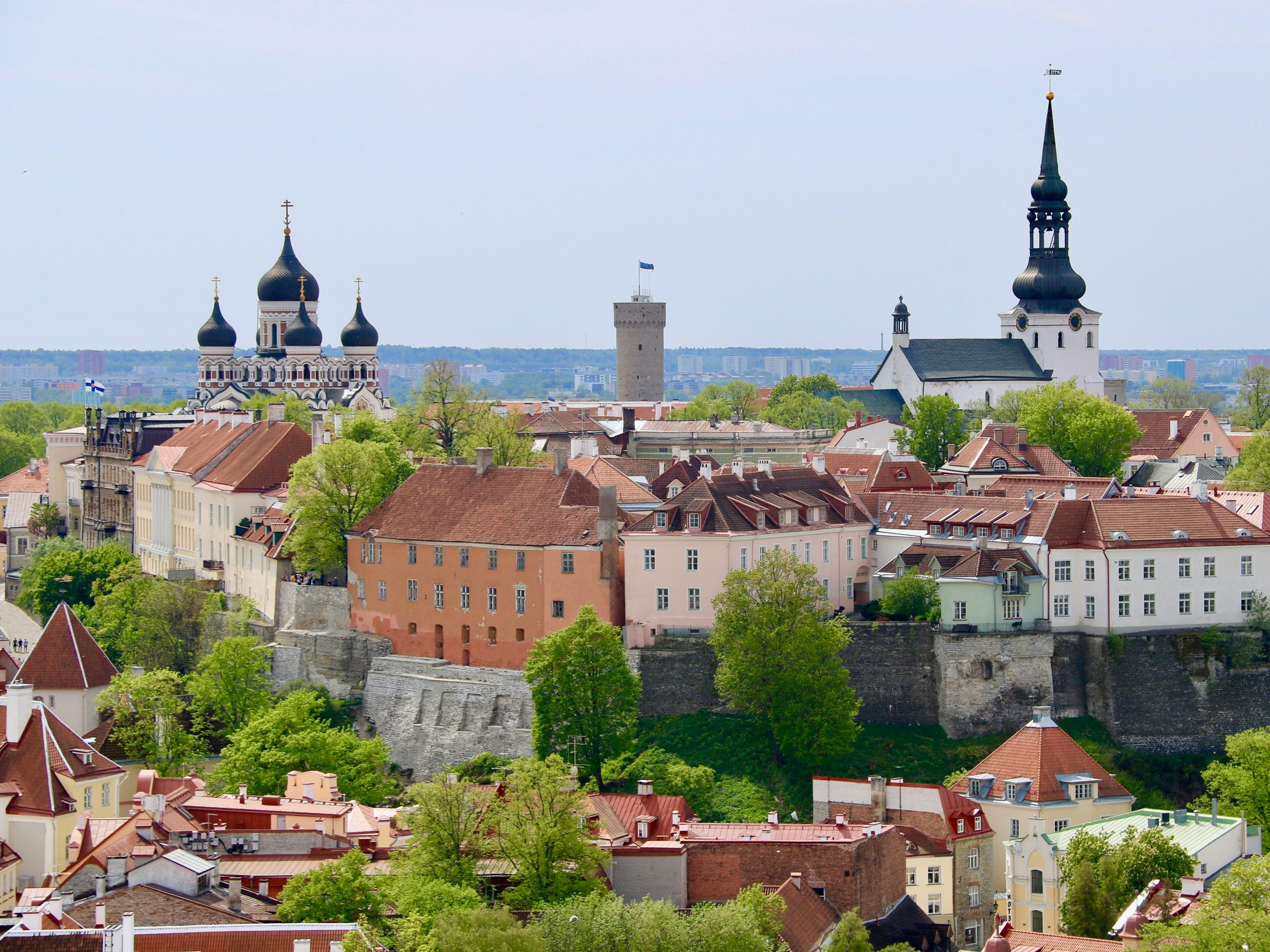Introduction & Overview
Estonia, the small Baltic nation known as one of the most digitally advanced countries in the world, was also one of the first to launch a Digital Nomad Visa (DNV) back in 2020. By 2025, the program has matured, becoming a leading option for remote workers who want to live in Europe while continuing to work for foreign companies or clients.
Famous for its e-Residency program, Estonia built its reputation as the world’s first fully digital society. Nearly all government services, from registering a company to signing contracts, can be done online. This digital-first mindset made Estonia a natural pioneer for remote work visas.
The Estonia Digital Nomad Visa allows freelancers, employees of foreign companies, and online entrepreneurs to live legally in Estonia for up to 12 months while working remotely. It’s a temporary residence solution, not a permanent pathway to citizenship, but it gives digital nomads a stable base inside the European Union and Schengen Area.
In this comprehensive 2025 guide, we’ll cover:
- Who qualifies for the Estonia Digital Nomad Visa
- Key eligibility criteria and income requirements
- Step-by-step application process and required documents
- Visa costs, processing times, and validity
- Benefits and challenges of choosing Estonia
- Cost of living and best cities for digital nomads
- Tax obligations and insurance rules
- Family inclusion (spouse, kids, dependents)
- FAQs and tips for applicants
By the end, you’ll have a clear roadmap for applying to Estonia’s Digital Nomad Visa — and a realistic idea of what life in Estonia as a remote worker looks like.
👤 Who Can Apply for the Estonia Digital Nomad Visa?
The Estonia Digital Nomad Visa is targeted at remote professionals who earn their income from abroad. It’s not a local work permit; instead, it’s designed for those who bring money into Estonia while working online.
You may qualify if you are:
- ✅ Remote employees: You work for a company registered outside Estonia, and your role is location-independent.
- ✅ Freelancers/contractors: You provide services to clients primarily based outside Estonia.
- ✅ Entrepreneurs/business owners: You run your own online business serving an international market.
You will not qualify if:
- ❌ You plan to work for Estonian companies as your main source of income.
- ❌ You cannot demonstrate stable and sufficient monthly income.
- ❌ You want permanent settlement (the DNV is a temporary visa only).
📋 Eligibility Criteria (2025 Update)
Estonia sets strict but clear eligibility rules for digital nomads. As of 2025, here’s what you need to meet:
- Remote Work Proof
- You must show that your job can be done entirely online.
- This means having an employment contract with a foreign company, or showing freelance contracts and invoices from international clients.
- Income Threshold
- The official requirement is tied to Estonia’s national wage data.
- As of 2025, the threshold is approx. €4,500 per month gross income.
- This ensures applicants are financially independent and won’t burden the Estonian system.
- Sustained Income History
- You must prove that you’ve been consistently earning above the threshold for at least 6 months prior to application.
- Health Insurance
- You need private medical insurance valid in Estonia for the full duration of your stay.
- Clean Background
- No criminal record in the past 5 years.
- Police clearance certificate is required.
- Accommodation Proof
- Lease, rental agreement, or hotel/temporary booking.
💶 Financial Requirements in Detail
The income requirement is one of the highest among digital nomad visas worldwide, making Estonia’s program accessible mainly to established professionals.
- Main applicant: €4,500/month gross income minimum.
- For families: Additional income is required for each dependent (exact figures vary, but expect to prove significant financial stability).
How to Prove Your Income
- Remote employees:
- Employment contract + last 6 months of payslips + bank statements.
- Freelancers:
- Client contracts, invoices, and bank statements showing regular payments.
- Entrepreneurs:
- Business registration docs + profit statements + personal withdrawals into your account.
👉 Tip: The more transparent your financial records, the stronger your case. Estonia values clarity and digital documentation.
Application Process, Required Documents, Fees & Timelines
🛠️ Step-by-Step Application Process
Applying for the Estonia Digital Nomad Visa is straightforward, but requires careful preparation. Here’s the full process in 2025:
1. Confirm Eligibility
Before applying, make sure you:
- Work remotely for non-Estonian clients or employers.
- Earn at least €4,500/month gross income consistently for the past 6 months.
- Have valid health insurance.
- Can provide proof of accommodation in Estonia.
2. Choose Visa Type
Estonia offers two formats under its DNV program:
- Type C Visa (Short-Stay) – valid up to 90 days.
- Type D Visa (Long-Stay) – valid up to 12 months.
Most digital nomads choose the Type D visa, as it allows a full year of stay.
3. Complete the Application Form
- Fill out the Estonian visa application form (online or via embassy).
- Double-check all details: passport number, travel dates, accommodation address.
4. Gather Documents
Prepare all required supporting paperwork (see checklist below). Missing or incomplete documents are the most common reason for delays.
5. Book Appointment & Submit Application
- Apply at your nearest Estonian embassy or consulate.
- Submit biometrics (fingerprints, photo).
- Provide original and translated/apostilled documents where needed.
6. Pay the Fee
Pay the visa application fee (cash or card depending on consulate).
7. Wait for Processing
- Typical processing: 15–30 days.
- Some cases may take longer if additional checks are required.
8. Receive Visa Decision
- If approved: Visa will be stamped in your passport.
- If denied: You may appeal or reapply with stronger documentation.
9. Travel to Estonia
Once approved, you can travel to Estonia and live there for the duration of your visa while working remotely.
📄 Required Documents Checklist
Here’s the official 2025 checklist you’ll need for the Estonia DNV:
- ✅ Valid passport (6+ months validity, with blank pages).
- ✅ Completed application form (C or D visa).
- ✅ Recent passport-sized photos.
- ✅ Employment contract (for remote employees) OR
- ✅ Freelance contracts/invoices (for self-employed) OR
- ✅ Business registration documents (for entrepreneurs).
- ✅ Proof of income:
- Payslips/bank statements for the last 6 months.
- Must show at least €4,500/month.
- ✅ Health insurance policy covering Estonia.
- ✅ Criminal record certificate from home country (issued within 3 months).
- ✅ Accommodation proof in Estonia (lease, hotel, Airbnb, etc.).
- ✅ Cover letter/motivation letter explaining:
- Why you want to live in Estonia.
- How your work is remote and non-Estonian based.
- Your plans during the stay.
- ✅ Family documents (if applying with dependents):
- Marriage certificate, children’s birth certificates, all legalized & translated.
👉 Tip: Estonia is very digitally focused. Submitting well-organized digital copies alongside originals improves your credibility.
💶 Fees & Costs
Applying for Estonia’s Digital Nomad Visa is relatively affordable compared to other EU visas.
- Type C (Short-Stay Visa): ~€80
- Type D (Long-Stay Visa): ~€100
- Other costs:
- Document translations and apostille fees (~€100–€300 depending on country).
- Private health insurance (~€50–€100/month).
- Accommodation (varies, deposit often required).
⏱️ Processing Time
- Average processing time: 15–30 days.
- Some embassies process faster, while others may take up to 45 days during peak season.
- For dependents (spouse/kids), allow extra time for family visa approvals.
📝 Quick Application Summary
- ✅ Confirm eligibility & income threshold.
- ✅ Choose visa type (C = short, D = long).
- ✅ Fill out application form.
- ✅ Gather documents (income, contracts, insurance, background check, accommodation).
- ✅ Book appointment at embassy/consulate.
- ✅ Submit application + biometrics + pay fee.
- ✅ Wait 2–4 weeks.
- ✅ Collect visa & travel to Estonia.
Benefits, Cost of Living & Lifestyle for Digital Nomads
🌟 Benefits of the Estonia Digital Nomad Visa
- Live Legally in the EU as a Remote Worker
- Gives you the right to live in Estonia while continuing your remote job or freelance business.
- Stay longer than the 90-day Schengen tourist allowance.
- Schengen Travel Freedom
- With an Estonian visa, you can travel across 26 Schengen countries for up to 90 days in any 180-day period.
- Strong Digital Infrastructure
- Estonia is known as the world’s first digital society.
- Fast internet, widespread e-services, and paperless bureaucracy make it ideal for online professionals.
- Affordable Application Costs
- At €80–€100, the Estonia DNV is cheaper to apply for than many other European digital nomad visas.
- Safety & Quality of Life
- Low crime rates, clean cities, and excellent healthcare.
- Ranked among the safest countries in Europe.
- Work-Friendly Environment
- Tallinn and Tartu offer vibrant coworking spaces, startup events, and active expat communities.
- Cultural & Natural Attractions
- Medieval cities, Baltic Sea coastlines, forests, and islands.
- Rich culture with Nordic and Eastern European influences.
💸 Cost of Living in Estonia (2025)
Estonia is moderately priced compared to Western Europe, though more expensive than some Eastern European countries.
Here’s an average monthly budget for a single digital nomad:
- Rent (1-bedroom apartment):
- Tallinn (city center): €800–€1,200
- Tartu: €500–€800
- Pärnu / smaller towns: €400–€700
- Utilities (electricity, heating, internet, water): €100–€170
- Groceries & eating out: €300–€500
- Public transport: €30–€50 per month (Tallinn, Tartu have efficient systems)
- Coworking space: €120–€250 per month
- Leisure (gym, entertainment): €50–€100
👉 Total: €1,200–€2,000/month depending on lifestyle and location.
🌍 Internet, Coworking & Remote Work Culture
- Internet speed: Estonia is among the fastest in Europe, with widespread 4G/5G coverage and reliable fiber broadband.
- Coworking hubs: Popular spaces in Tallinn and Tartu offer flexible desks, private offices, and networking events.
- E-services: Nearly everything can be done online: registering an address, signing documents, paying taxes.
- Digital-first mindset: Even small cafés are laptop-friendly, and mobile payments are standard.
🌆 Lifestyle for Digital Nomads in Estonia
🏙️ Tallinn
- Capital city, home to a buzzing startup ecosystem.
- Medieval Old Town meets modern skyscrapers.
- Lively coworking and expat scene.
🎓 Tartu
- University town with a youthful vibe.
- Affordable housing and laid-back culture.
- Ideal for nomads who want a quieter but connected lifestyle.
🏖️ Pärnu
- Estonia’s summer capital, popular for its beaches.
- Seasonal but affordable, with strong community feel.
🌲 Islands & Countryside
- Saaremaa, Hiiumaa, and other islands offer tranquility.
- Best for digital nomads who prefer nature, solitude, and slower living.
🌤️ Climate & Seasons
- Winter (Dec–Feb): Cold, snowy, dark. Expect -5°C to -15°C.
- Spring (Mar–May): Mild, nature blossoms, daylight increases.
- Summer (Jun–Aug): Warm, long days, festivals. 18–25°C.
- Autumn (Sep–Nov): Colorful but chilly, more rain.
👉 Pro tip: If you thrive on sunshine, Estonia’s dark winters may be challenging. Many nomads stay spring–autumn and move south in winter.
Family Inclusion, Taxes & Pros and Cons
👨👩👧 Family Inclusion Rules
The Estonia Digital Nomad Visa is primarily designed for individual remote workers, but your family members can join you under certain conditions.
Who Qualifies as a Dependent?
- Spouse or registered partner
- Children under 18
- Dependent adult children (if studying and financially reliant)
Requirements for Family Inclusion
- You must prove higher income to support dependents (authorities may ask for additional bank statements or contracts).
- Provide legalized documents: marriage certificate, children’s birth certificates, translations/apostille if required.
- Each family member will need health insurance valid in Estonia.
Benefits for Family Members
- Family receives residence permits linked to your visa.
- Children may enroll in Estonian public or private schools.
- Access to Estonia’s safe environment, cultural opportunities, and healthcare.
👉 Note: Since the visa is temporary (max 12 months), long-term family planning may be limited unless you later transition to another type of residency.
🏦 Tax Residency in Estonia
Taxation is one of the most important aspects for digital nomads.
183-Day Rule
- If you stay in Estonia for 183 days or more in a calendar year, you may be considered a tax resident.
- As a tax resident, you must declare and potentially pay tax on worldwide income in Estonia.
If You Stay Under 183 Days
- If you stay less than 183 days, you may avoid becoming a tax resident.
- However, your home country’s tax rules and international treaties apply.
Estonia’s Tax System
- Flat 20% income tax rate.
- Very modern and digitalized: filing is quick and done online.
- Social tax obligations may apply if you register as self-employed.
👉 Many nomads choose to limit their stay under 183 days to avoid triggering tax residency. Others embrace Estonia’s efficient tax system and register properly.
🛡️ Health Insurance Obligations
- Health insurance is mandatory for all applicants and dependents.
- Must cover emergency and medical treatment in Estonia.
- Costs: €50–€100/month depending on provider and coverage.
- Public healthcare access is generally not included until permanent residency.
✅ Pros of Estonia Digital Nomad Visa
- First-Mover Advantage
- Estonia pioneered the DNV, making it globally recognized.
- Modern Digital State
- Nearly all services are online, making bureaucracy simple.
- Schengen Access
- Travel across Europe while based in Estonia.
- Low Cost Compared to Western Europe
- Affordable housing and living outside Tallinn.
- Startup & Tech Scene
- Estonia is home to many unicorn startups (e.g., Skype, Wise, Bolt).
- Strong community of innovators and entrepreneurs.
- Safety & Clean Environment
- Low crime rates, well-preserved nature, high-quality infrastructure.
⚠️ Cons of Estonia Digital Nomad Visa
- High Income Threshold
- At €4,500/month, Estonia’s requirement is among the highest globally.
- Temporary Only
- Visa valid for max 12 months, no direct path to permanent residency or citizenship.
- Cold, Dark Winters
- Harsh climate with long periods of limited daylight in winter.
- Limited for Families Long-Term
- Not designed for permanent relocation with children.
- Tax Residency Risk
- Staying longer than 183 days can trigger global taxation in Estonia.
Renewal, FAQs & Conclusion
🔄 Renewal & Extension Options
The Estonia Digital Nomad Visa is designed as a temporary stay permit, not a long-term residency path.
- Type C Visa (Short-Stay): Valid for up to 90 days. Not extendable beyond its limit.
- Type D Visa (Long-Stay): Valid for up to 12 months. Extensions are possible in limited cases, but generally, this is a one-year solution.
👉 Important: The Estonia DNV is not a direct route to permanent residency or citizenship. If you want to stay long-term, you’d need to explore other residence permits (e.g., business permit, startup visa, work permit).
❓ FAQs About Estonia Digital Nomad Visa (2025)
1. What’s the minimum income requirement?
You must prove a stable income of around €4,500/month gross for the last 6 months.
2. Can I work for Estonian companies on this visa?
No. The visa is only valid if your primary income comes from abroad.
3. Can my spouse and kids come with me?
Yes, but you’ll need higher income proof and legalized family documents.
4. How long does processing take?
Applications usually take 15–30 days, though complex cases may take longer.
5. Can the visa be renewed?
The long-stay visa is valid for 12 months. Extensions are limited, and many nomads simply reapply after leaving.
6. Will I become a tax resident?
If you stay 183 days or more in Estonia in a year, you may become tax resident and owe tax on worldwide income.
7. Do I need to speak Estonian?
Not for the visa. English is widely spoken in Tallinn and among younger people, but basic Estonian helps in daily life.
8. Does the DNV give permanent residency or citizenship?
No. The program is strictly temporary. To stay long-term, you must apply for another type of residence permit.
🌟 Conclusion
Estonia’s Digital Nomad Visa is one of the most innovative and well-known remote work programs in the world. It offers:
- Legal residency for up to 1 year.
- Access to the Schengen Area.
- A chance to live in one of Europe’s most digital societies.
- Safe, clean, and affordable living outside Western Europe’s big hubs.
However, the visa is also:
- Strict with its income requirement (€4,500/month).
- Temporary in nature, with no direct path to residency or citizenship.
- Challenging for those unprepared for long, dark winters.
👉 If you are a high-earning remote worker seeking a short-term EU base in a highly digital country, Estonia is a strong option in 2025. But if you want long-term settlement or lower income thresholds, you may want to compare it with countries like Spain, Portugal, or Croatia, which offer longer stays or easier paths to residency.



